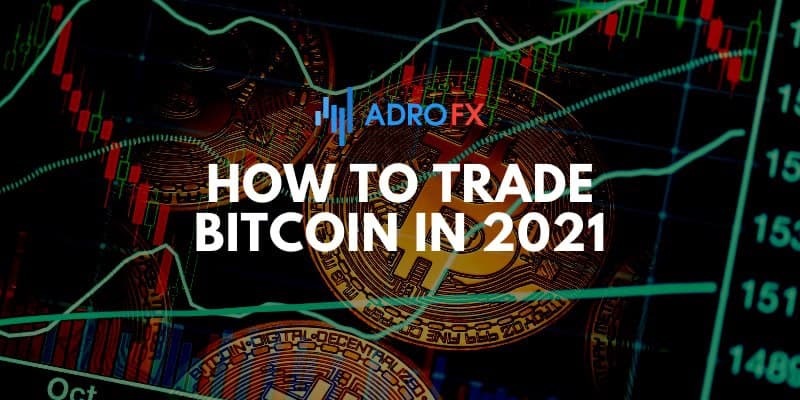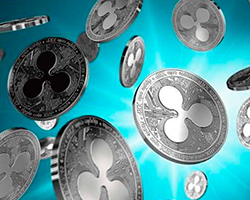Trading Cryptocurrency CFDs vs. Traditional Investing in 2021

It is well-known that any crisis urges people to invest in reliable assets, to look for a safe haven for capital preservation and multiplication. The modern world offers a huge number of financial instruments with different levels of returns and risks. Being afraid of big losses because of the economic crisis, the majority of international investors prefer safe-haven assets and conservative strategies.
Currently, there are several options for relatively safe investing. The most popular safe-haven assets are considered gold and bitcoin. The first digital coin has gained enormous popularity among the new generation of investors and is now one of the most popular financial instruments. At the same time, it has advantages and disadvantages, which should be considered when creating an investment strategy.
In this article, we will compare cryptocurrency trading and traditional assets, like gold. Also, we will learn how to trade cryptocurrency and what are the risks of cryptocurrency trading.
Bitcoin vs. Gold Investing in 2021
Throughout history, gold has held a high value. The number of wars over reserves or mines of the yellow precious metal is difficult to count not only on the fingers of one man but also his friends and relatives. In the twenty-first century, wars are fought most often over oil, yet gold remains an important commodity in the global economy.
From the point of view of modern investors, the yellow metal is considered to be a good option for long-term investments, for over the last 50 years the metal has risen in price 50 times. Also gold is an "anti-crisis" asset - every 10-15 years the world economy experiences problems, during this time the demand and price for investment gold go up rapidly. In 2021 this is more than relevant.
Between 2014 and 2019, there was no trend in the gold market, with the price per ounce fluctuating between $1,000 and $1,400. At the end of 2019, the Fed Reserve Bank began to gradually lower the benchmark interest rate, and it gave a boost to the precious metal - a bullish trend began. The coronavirus crisis forced an interest rate cut to its lowest level. As a consequence, prices quickly reached an all-time high of $2075 in mid-2020. Notably, gold's 2020 yield was 24%, the best result in a decade.
Today, the gold price chart looks like this:

Bitcoin, on the other hand, is the new digital gold, which, like precious metals, has intrinsic value and a deflationary model. Crypto projects continue to grow intensively, now booming in the industry, which is also spurring market growth.
The dynamics of bitcoin makes even the most distant from the investments ordinary people think about trading cryptocurrency.
Indeed, we all wish we could go back to 2009 and buy some bitcoins for a few dollars - during the 16 months, bitcoin grew almost 9 times: in January 2020 its rate was $7.4 thousand and in April 2021 reached $64 thousand:

Investors appreciated the leap of cryptocurrency and began to consider it as an instrument of risk hedging and successful investment for the medium and long term. Big companies and venture capital investors saw bitcoin as a protective asset that insures capital from depreciation during the crisis.
Tesla alone invested $1.5 billion in bitcoin, and Grayscale has the largest bitcoin portfolio - the value of all of their bitcoins is $7.4 billion. The world began to realize that cryptocurrencies are the future, the next step in the evolution of funds.
Now, bitcoin has a market capitalization of $1 trillion, making it the tenth most valuable asset in the world. Meanwhile, the capitalization of Google is $1.2 trillion, Apple is $2.2 trillion and gold is worth $10 trillion, but it took them much longer than cryptocurrency to reach this level.
A Bitcoin Investment Strategy in 2021
Half the way to successful cryptocurrency trading is to use financial strategies that have worked for years.
Perhaps the simplest strategy with cryptocurrency is to buy it and leave it as an investment for the long term. This option was suggested by the head of the data center Six Nines Sergey Troshin. He noted that in this case, capital is invested in the asset, which will not be needed for life shortly. Otherwise, in the case of a fall in the value of the coin, you will have to sell it at a loss.
Finding the perfect moment to buy bitcoin is literally impossible. No matter what price a trader buys an asset at, it is highly likely to decline before entering a long-term growth phase. That's why some investors use an "averaging" strategy.
This strategy works like this: the trader divides his capital into several parts and buys bitcoin for them over time. In such a way, if the price of the asset goes down, you can use this as an investment opportunity and buy more coins. In this case, the average BTC purchase price will go down.
Each trader can determine for himself how many pieces he will divide his capital. The more there are, the more average the price will be. According to experts, the best variant - to invest $10 every day in BTC.
One more strategy for trading cryptocurrency to keep in mind is diversification.
You can invest not only in bitcoin. On the contrary, by dividing capital between BTC and other cryptocurrencies, you can get higher returns. However, the risks in this case also increase. It is due to the volatility. Altcoins have much higher volatility than the main digital coin.
For example, on March 12-13 of last year bitcoin price fell from $8000 to $3800 - by 53%. At the same time, Ethereum fell in price by 60%, from $213 to $86. At that time, altcoin lost more value than the first cryptocurrency, but after some time it has risen much more. The growth of ETH since the March collapse was 345%, BTC - 250%.
With the help of diversification, it is possible to rebalance the investment portfolio. For example, if one of the cryptocurrencies included in it has risen sharply, you can temporarily secure gains on it and transfer capital to other coins.
BTC Futures in 2021
Since early May, investors have the option to trade futures for 1/10th the value of bitcoin. This financial instrument was launched by the Chicago Mercantile Exchange CME Group, which added bitcoin futures in 2017. Ethereum futures also appeared on CME in February 2021. It became the first altcoin to be traded on a U.S. stock exchange.
Futures are contracts that guarantee that a buyer will buy an asset at a specified time, in a specified amount, and at a predetermined price. Such contracts can be traded and they guarantee the execution of the transaction.
Futures contracts allow traders, investors, and commodity producers to speculate on the future price of the asset, meaning investors trade cryptocurrency at a future price that is negotiated at the time of the contract.
Using futures, it is possible to use margin - leverage that increases the number of potential gains or losses by buying or selling the asset.
Futures can be used as a trading instrument to hedge risks. To do this, you must sell futures for the amount of the cryptocurrency portfolio in order to offset the risk of its possible drawdown.
Analysts do not recommend using futures as an independent and the only tool to gain. Trying to buy and sell futures while trading actively often makes less sense than a properly constructed investment portfolio hedged with futures.
Futures contracts are a complex financial instrument, which does not recommend the use of such contracts to beginners. It is necessary to understand that in order to get any return, one must buy the asset on the spot market and sell the corresponding futures. The trader will benefit only if the futures and spot prices converge.
When trading cryptocurrency futures, the trader must balance the desire to capital with the understanding of the need to fix losses at predetermined levels. That said, the cryptocurrency market, unlike classical markets, is more deeply corrective, so the frequent reversal of the price against the futures trader with a loss at the beginning and the subsequent movement in the expected direction is a very common pattern.
Other Bitcoin Investment Risks
Just like any other financial activity, trading cryptocurrency carries a certain level of risk. Although many see the future of cryptocurrency as promising, unexpected rate hikes make even experienced investors seriously wary.
So, what are the risks to consider when trading cryptocurrency?
High volatility
Bitcoin's value fluctuations, in general, are virtually unpredictable in the short term, and that adds to risk. Financial experts can relatively accurately predict the value of the dollar, the euro, and other fiat currencies or stock prices. But no one can accurately predict what bitcoin will be worth tomorrow.
The factors that cause volatility in the value of bitcoin are the large volume of exchange trading, regulatory initiatives, the integration of virtual currencies with various companies, and much more. In addition, financial and economic experts who pay attention to cryptocurrency note the high sensitivity of the bitcoin exchange rate even to news reports.
Regulation of the currency
Today, each country approaches the regulation of cryptocurrencies in its own way. The lack of a single well-thought-out regulatory system for cryptocurrencies only increases the uncertainty about their future. Regulators in many countries are concerned that bitcoin and other cryptocurrencies can be used for speculation, drug trafficking, money laundering, terrorist financing, and other illicit transactions. With the growing popularity of cryptocurrencies, government agencies in many countries are becoming more active with various legislative initiatives to regulate bitcoin and other virtual currencies.
Supply and demand imbalance
The bitcoin emission limit is 21 million, which is the maximum number of coins that will ever exist. There are already 18 million in circulation, which means there are only 3 million left for mining. What happens when there is limited supply and infinite demand? The price will skyrocket.
So far, only several companies - Tesla, PayPal, Square, MicroStrategy - have invested in the asset. The rest prefer to watch. When Google, Apple, Amazon, and many others join them, there won't be enough coins for everyone. Later, governments, international conglomerates, hedge funds, and state-owned enterprises will buy bitcoins. The market will face the biggest squeeze in history.
No doubt, bitcoin, and other cryptocurrencies are a good and interesting solution for profits, but mostly for those investors who are willing to take risks, because there is no guarantee of a minimum return or at least a break-even investment. Any investor who is going to trade cryptocurrency assets must clearly understand what it is and have a well-thought-out plan of action for all kinds of scenarios.
How to Trade Bitcoin in 2021
There are two ways to trade bitcoin in 2021. First, you can buy cryptocurrency on exchanges, such as Bitstamp or Coinbase. This way, you will own the bitcoin yourself. Doing so is considered a long-term investment, as you wait until the price rises significantly to sell the coins on the exchange.
Alternatively, you can trade a contract for difference (CFD) on a specific cryptocurrency and speculate on the difference in bitcoin price. A CFD is a financial instrument that is a contract, usually between a broker and an investor, where one party agrees to pay the other party the difference in the value of a security, usually called a buy/sell spread. You can hold a long position (assuming the bitcoin price will rise) or a short position (assuming the bitcoin price will fall). In this case, it is considered a short-term investment because CFDs are usually used in short periods.

There are fundamental differences between how to trade bitcoin and how to trade CFDs in the crypto market. When you buy cryptocurrency, it is stored in your crypto wallet, while when you trade CFDs, the position is held in your trading account, which is regulated by a financial authority. You have more flexibility when trading with CFDs because you are not tied to an asset; you just buy or sell the underlying contract. In addition, CFDs are a more established and regulated financial product.
Even though cryptocurrency remains a high-risk asset, with proper knowledge, investments in it can bring returns quite quickly. Long-term investments in the cryptocurrency will also yield excellent results - experts predict that bitcoin will reach the $100K mark as early as this year. Looking at the speed at which the main cryptocurrency breaks new marks, it seems that reaching a hundred is a matter of time.
Conclusion
Considering the arguments of different sides, we can conclude the attractiveness of both instruments. Most likely, gold will not lose its "safe haven" status and will serve as a protective asset for many years. At the same time, international investors will continue to choose different assets, including cryptocurrencies, for capital preservation, determining the composition of their portfolio in accordance with the designated goals.
Don't be under any false illusions about the ability to instantly multiply your wealth: investing requires patience. But of all the available assets, bitcoin and gold are particularly suitable for investors with a low-time preference.











